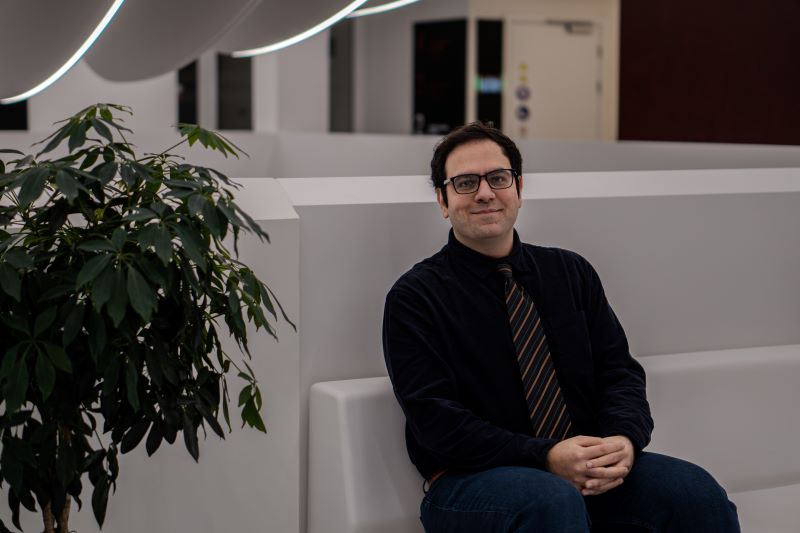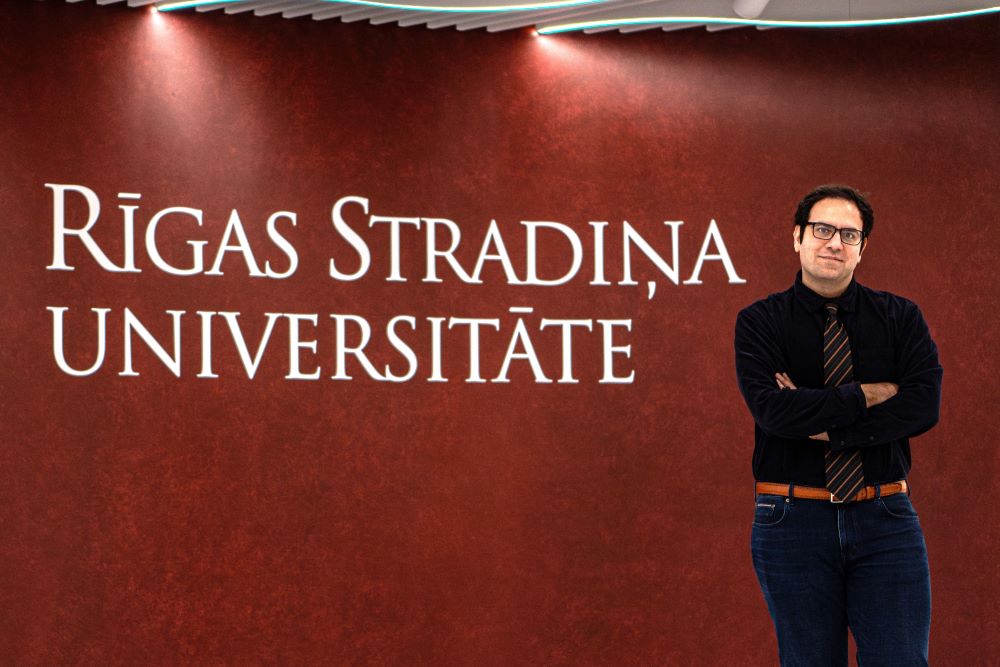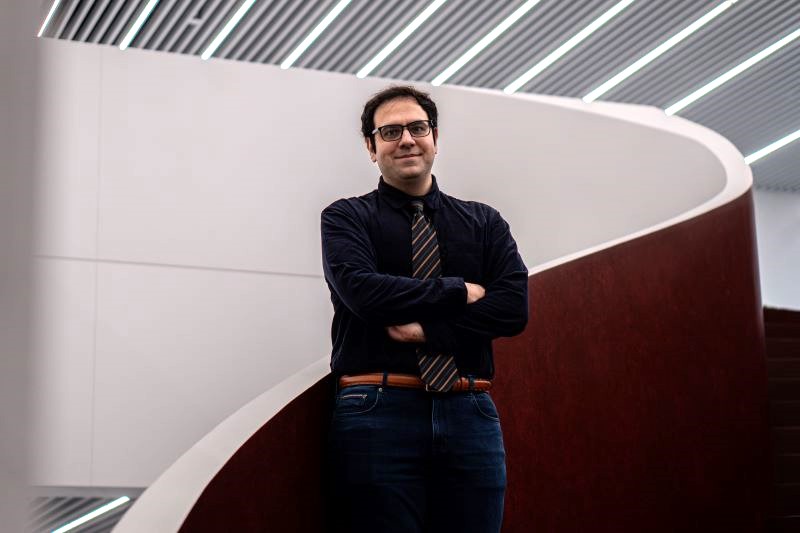RSU Tenured Professor Mohammadreza Azimi: ‘I envision RSU becoming a leader in precision medicine’
By Linda Rozenbaha, RSU Public Relations Unit
Photo: Courtesy of RSU
We are launching a series of articles introducing the tenured professors at Rīga Stradiņš University (RSU). This time, we present Mohammadreza Azimi, PhD, a Tenured Professor at the RSU Institute of Microbiology and Virology.

Could you share your journey in science? What inspired the direction you've taken, and what are the key highlights and most interesting points from your previous research?
My journey in science began with a fascination for how technology can unlock insights hidden in biological data. Initially drawn to image processing, I soon recognised its potential in biomedical research, particularly in understanding complex diseases such as cancer. Collaborating across disciplines has been especially rewarding, as it has allowed me to apply computational insights to areas like precision oncology. [Precision medicine is a new approach to healthcare based on individualised, patient-centred diagnostics and treatment, utilising genetic, molecular, and clinical data – Ed.]
I previously worked at the Royal College of Surgeons in Ireland (RCSI) and continue to engage with RCSI as a visiting scientist.
My research has focused on computational methods for high-dimensional data analysis, including single-cell imaging and spatial proteomics. Some of the most significant highlights of my work include contributing to studies that demonstrate the potential of spatial proteomics in characterising cancer subgroups and developing innovative prognostic tools for cancer.
My early interest in image processing and data science shaped my career path, as I realised their immense potential in tackling challenges in biomedical research and healthcare.
What motivated you to apply for the position of tenured professor at RSU? What attracted you to RSU?
RSU’s strong emphasis on interdisciplinary research and its commitment to advancing healthcare through innovative science made it a natural fit for my career aspirations. I was particularly drawn to the university’s focus on fostering collaboration between computational, clinical, and biological sciences—an approach that aligns perfectly with my research in precision oncology. Understanding the spatial and molecular aspects of diseases requires a truly interdisciplinary perspective, and RSU provides an ideal environment for this. Additionally, RSU’s growing reputation as a research-intensive university offers a strong platform to contribute to groundbreaking studies while mentoring the next generation of scientists.

Could you describe the research topics you are currently working on as a tenured professor? Why did you choose this research theme?
My research focuses on image processing for the interpretation of single-cell proteomics data within the field of precision oncology. Specifically, I am working on high-resolution spatial proteomics, which involves analysing protein distribution and cell-cell interaction patterns to understand their role in cancer development.
I chose this research theme because precision oncology has the potential to revolutionise cancer treatment by tailoring therapies to individual patients. By integrating computational image processing with molecular biology, we can uncover critical insights into the heterogeneity of cancer, ultimately improving patient outcomes.
Could you share some of the most interesting insights, methods, or goals from your current research?
One of the most exciting aspects of my research is leveraging advanced image processing techniques to map the spatial organisation of proteins at the single-cell level. This approach allows us to identify unique cancer phenotypes and explore their interactions within the tumour microenvironment.
For example, in a recent study on stage III colorectal cancer, we examined the spatial relationships between immune cells and cancer cells using multiplexed imaging and a Python-based analysis tool. Our findings revealed that shorter distances between cytotoxic/helper T cells and cancer cells correlate with improved disease-free survival. One of the most intriguing insights was our ability to cluster patients into low- and high-risk groups based on spatial and protein expression data, offering a potential tool for personalised prognosis and therapy strategies.
Our goal is not only to generate impactful scientific insights but also to make these findings accessible to clinicians, ensuring that they translate into real-world benefits for patients.
What scientific disciplines are represented in your research team, and what roles do they play?
A wide variety of fields are represented in my research team. To bridge research and application, we primarily need software engineers to create user-friendly tools, imaging and pathology scientists to interpret and validate results from imaging techniques like IHC and microscopy, and data scientists to develop algorithms and tools for image processing and data analysis.
Our initiatives are certain to be creative and well-rounded thanks to this varied representation.

How do you envision the future development of RSU as a scientific university?
I see RSU evolving into a leading centre for precision medicine and interdisciplinary research,
particularly in fields such as oncology and microbiology—extending its influence beyond the Baltics. By investing in cutting-edge technologies like spatial proteomics and strengthening international collaborations, RSU can establish itself as a global hub for innovative scientific research. Expanding research infrastructure and providing strong support for early-career researchers will be key to realising this vision.
Who is a scientist or personality that inspires you the most in your work?
I am inspired by the pioneering work of Harold Varmus, whose contributions to cancer research and precision medicine have profoundly shaped the field. His ability to bridge fundamental science with clinical applications serves as a guiding example for my own research.
What is your motto or guiding principle in science?
"Science should be impactful, collaborative, and reproducible." This principle shapes my approach to interdisciplinary research and drives my commitment to creating tools and methods that can positively influence both the scientific and clinical communities.
In your opinion, how has the role of scientists evolved in today’s world?
Scientists today are not just researchers; we are communicators, innovators, and problem-solvers. Our role has expanded to address global challenges, from healthcare disparities to climate change, while making science more accessible and inclusive. The need for interdisciplinary collaboration has never been greater.
Outside of science, what excites you the most?
I enjoy exploring nature, photography, music, and travelling to experience new cultures. These activities help me recharge and offer fresh perspectives, which often inspire new ideas for my research. Striking a balance between work and leisure is key to fostering creativity and maintaining productivity.




